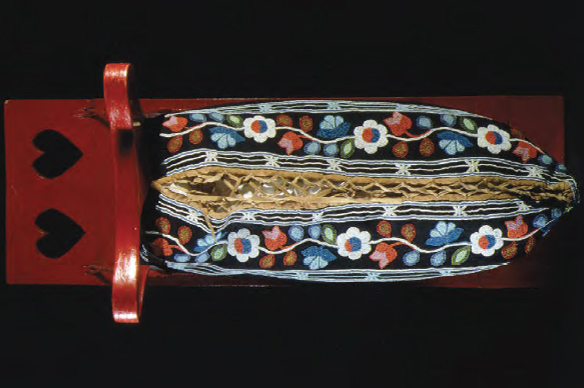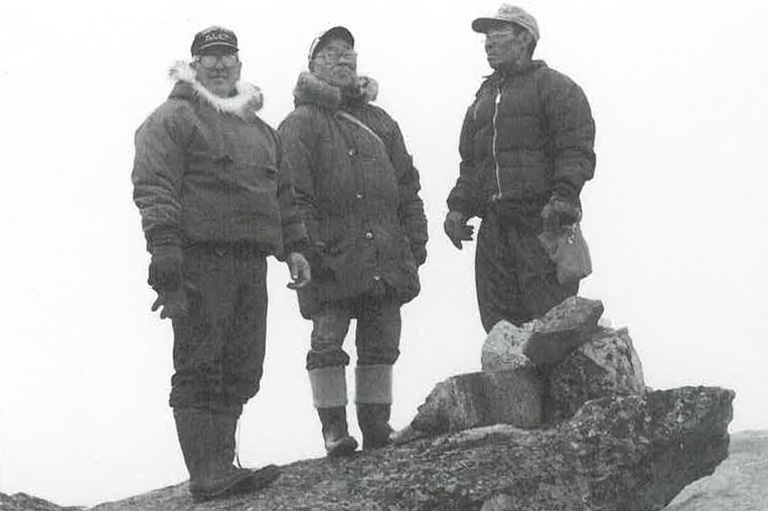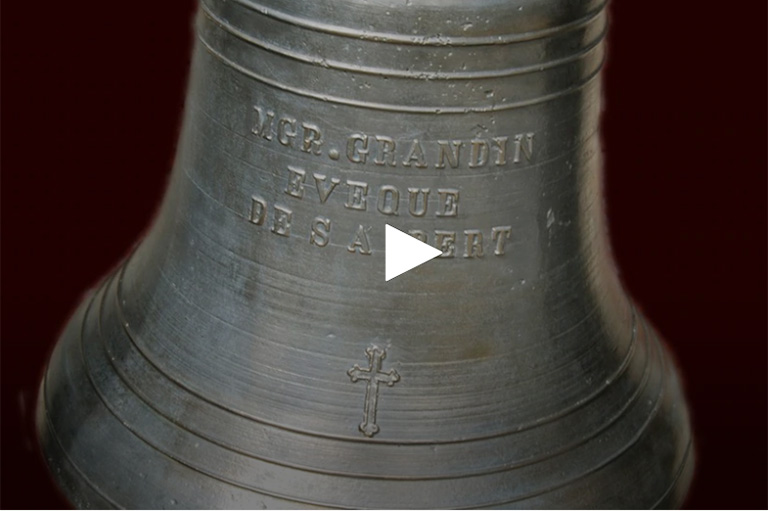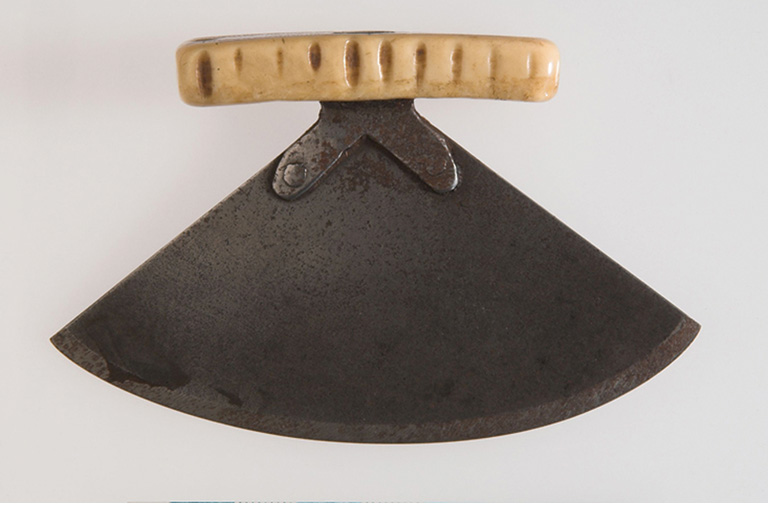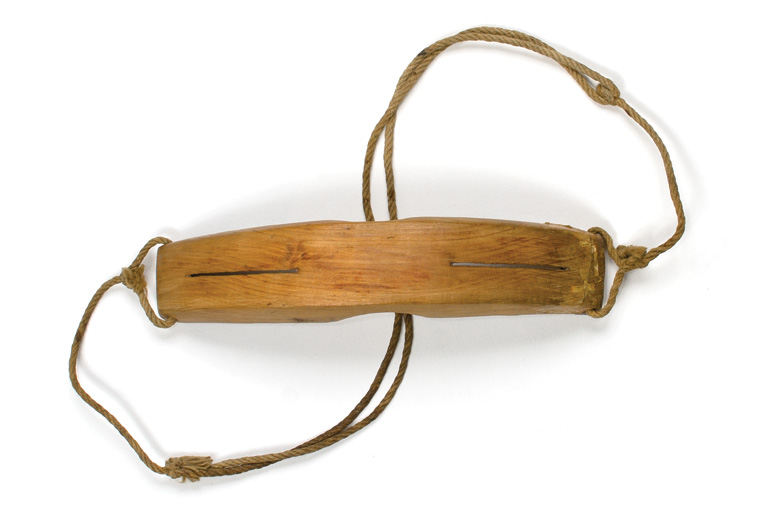Discover a wealth of interesting, entertaining and informative stories in each issue, delivered to you six times per year.
Tea Doll
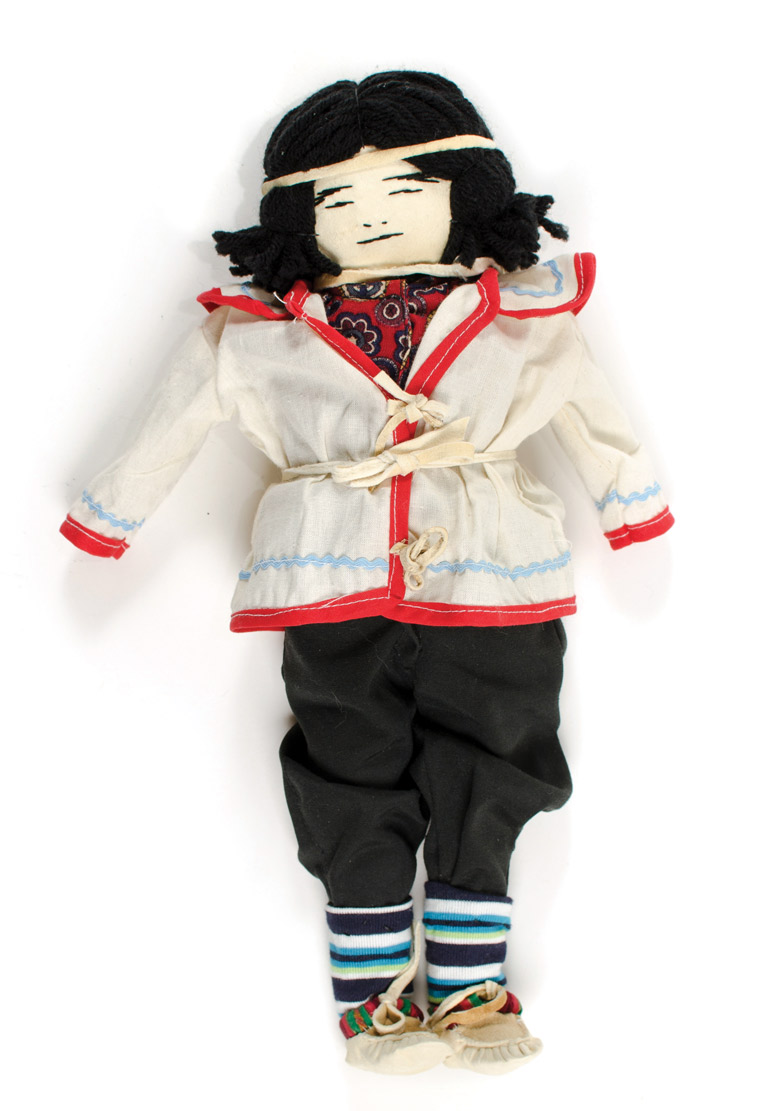
Not every doll that attends a child’s tea party is a tea doll. This doll is actually stuffed with two pounds of loose tea leaves!
When the Innu travelled to their hunting grounds in interior Labrador and eastern Quebec — as some still do today, although it was much more common pre-1950s — everyone was expected to carry a share of the load. Children carried their share by bringing along dolls stuffed with reserves of tea. After the tea was consumed, the doll could then be stuffed with grass or leaves to retain its shape.
This doll was made by Sheshatshui artist Angela Andrew of Labrador, likely in the late 1990s. It was collected because it is an excellent example of a tea doll and of this important cultural tradition. The face, headband, and moccasins are made from tanned caribou hide. The doll’s body and clothing are made from broadcloth and other fabrics, and yarn was used for the hair.
Tea dolls, which continue to be made by Andrew and by other artists in Labrador, are a popular collectable item and are now in high demand.


